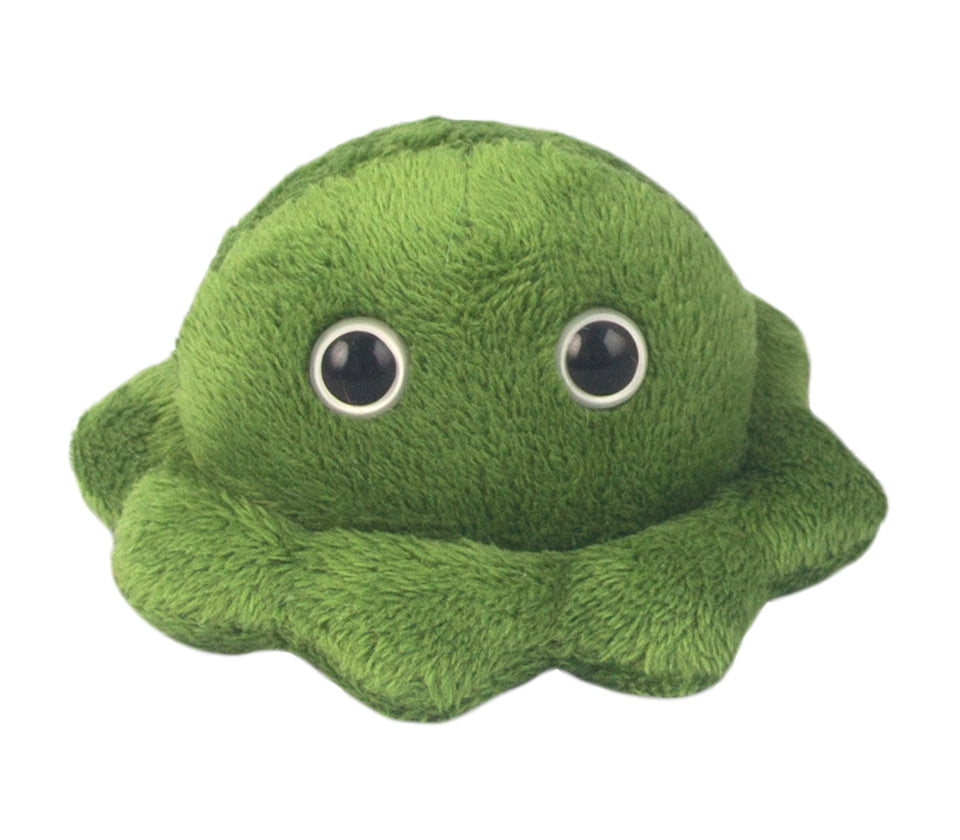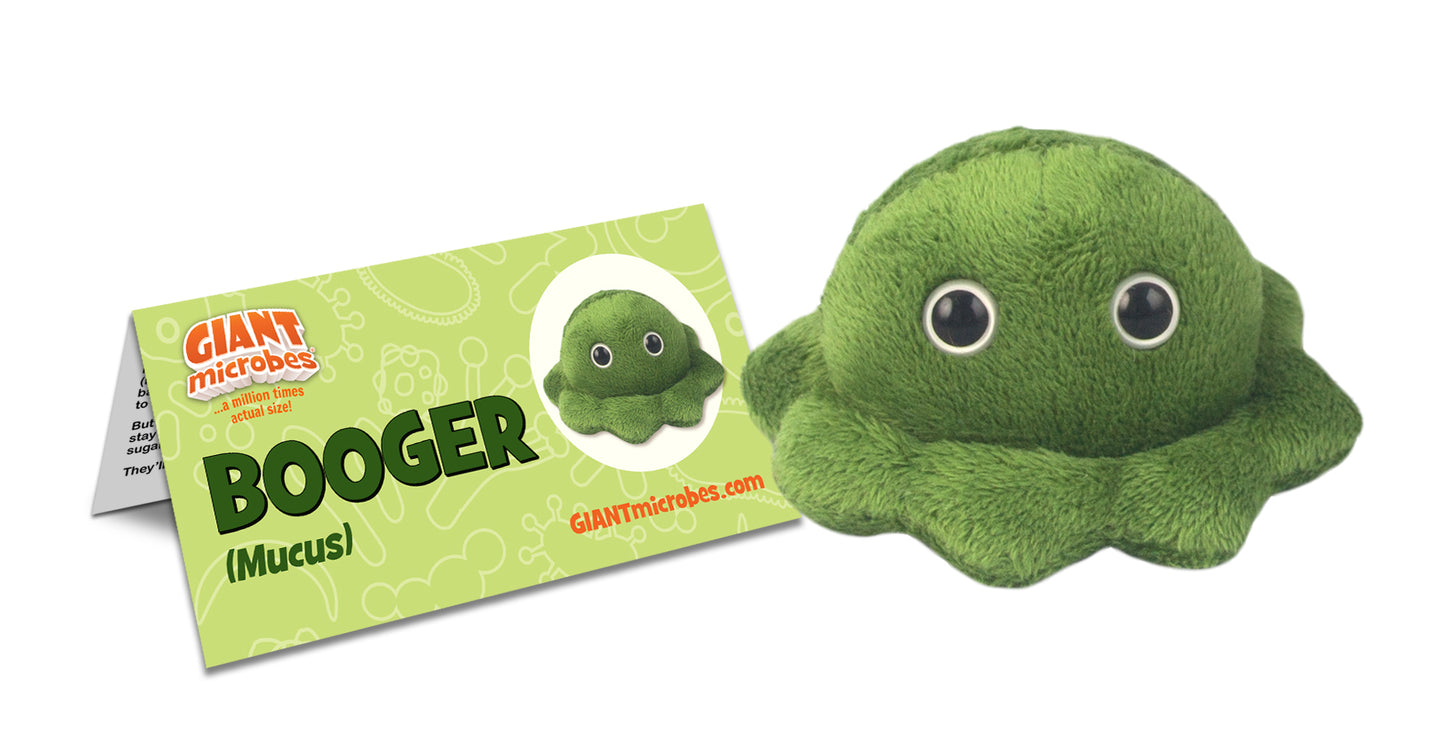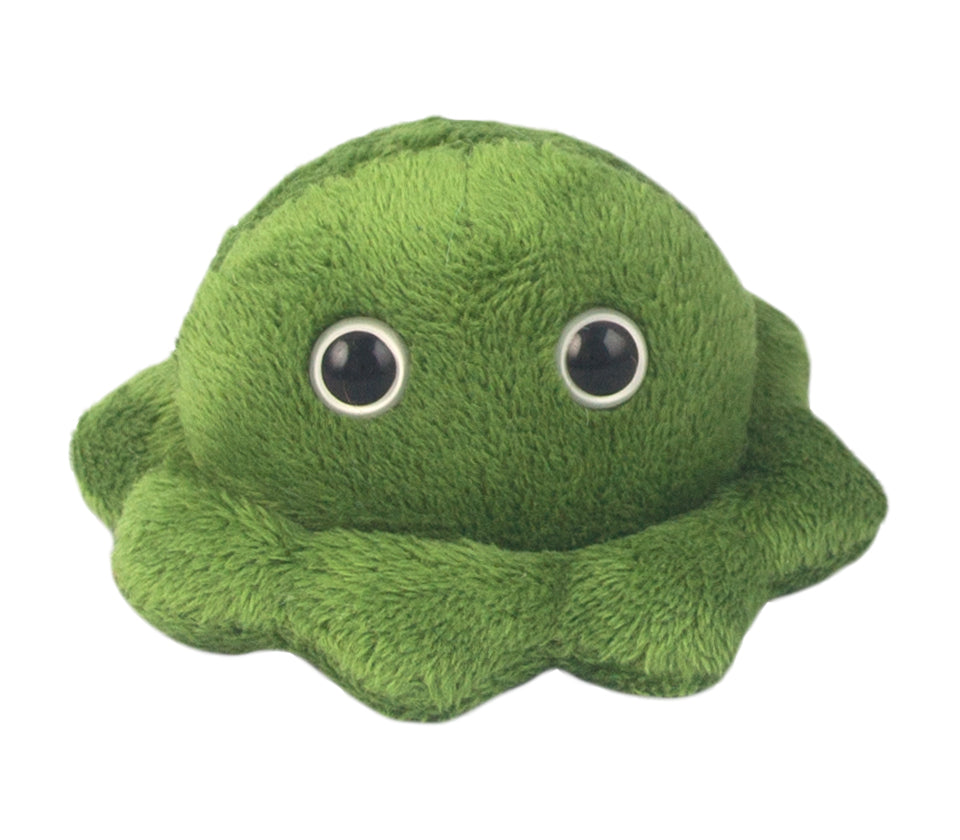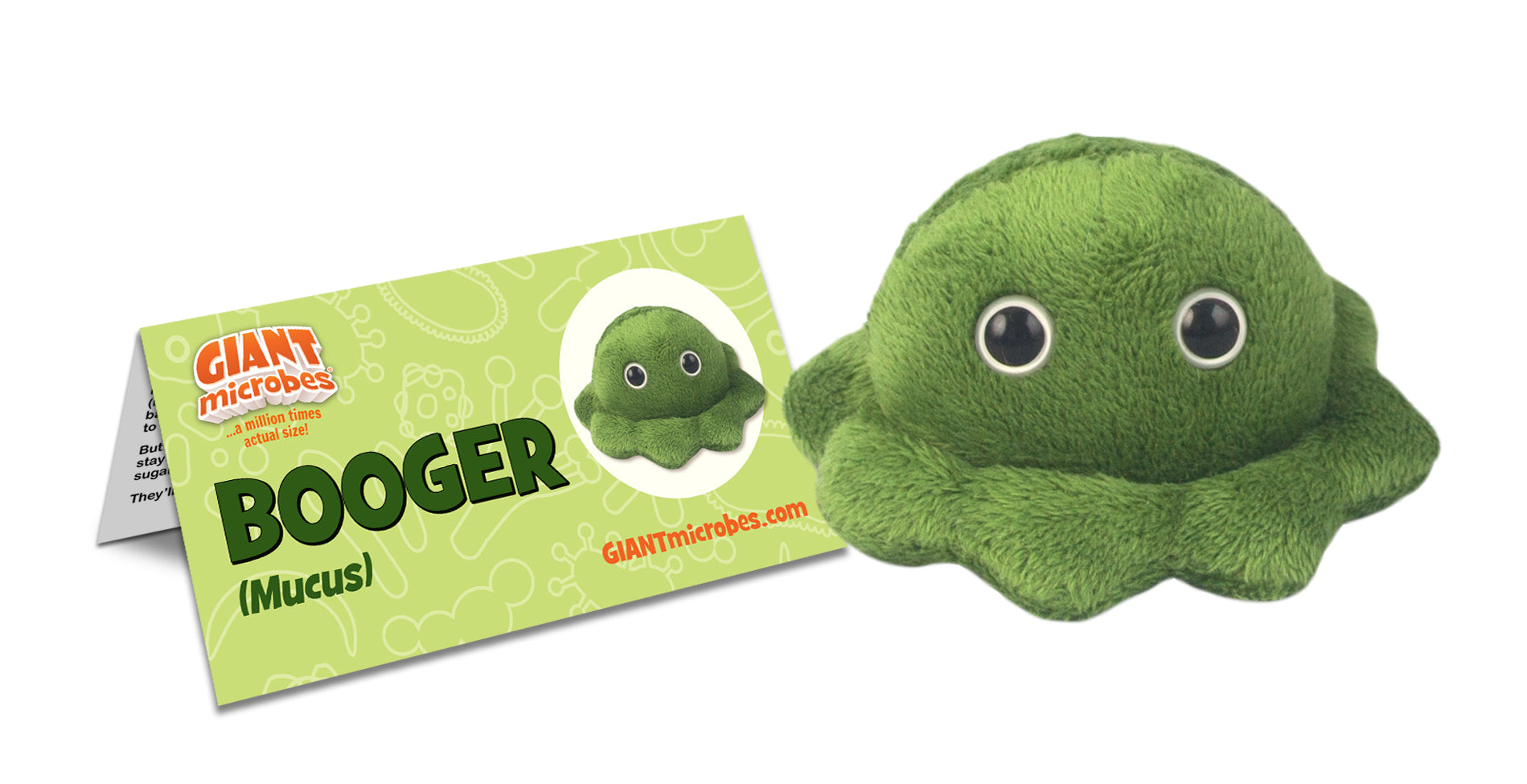Booger (Mucus)
Booger (Mucus)
Couldn't load pickup availability
Dried nasal mucus is what we call boogers. Mucus is vital to your immune system since it catches wayward microbes before they reach your lungs.
Surveys show that most people admit to picking their nose! Picking is not the best habit though, so why not pick this adorable little guy instead!
All About Booger (Mucus)
FACTS: Dried nasal mucus is what we call boogers. Mucus is a slimy goo vital to your immune system. In your nose, mucus catches wayward microbes and other foreign particles before they reach your lungs. When a cold invades and stuffs up your nose, dead viruses get stuck in the mucus turning it from clear to green. So that dripping snot is escorting out unwelcome microbes. And when mucus dries out, hardens, and sticks in your nose, you’ve formed boogers!
Boogers and mucus are closely related, one more solid and the other more viscous. Both forms are vital to help keep you healthy. In the airways of your lungs, mucus is actually called phlegm.
Mucus and phlegm need to be wet in order to do their job of removing microbes and the dust that you breathe in. When boogers form, you may get that special itching sensation that you’ll want to deal with. Perhaps you think the answer is a little picking to dislodge the source of that itch. In fact, most people do partake in rhinotillexis. Yes, surveys show that over 70% of people admit to picking their nose! Picking is not the best habit though, so why not let your boogers just be and make every effort to avoid rhinotillexomania and especially mucophagy!
| DESCRIPTION | Boogers are squishy, slimy chunks of mucus. Mucus, also known as snot, lines the inside of your nose, airway, and even digestive tract in order to help the body. It moistens the inside of the body and warms the air we inhale. The main job of mucus is to trap intruders that try to enter our body through the air and disturb our lungs. To prevent lung irritation, snot traps dirt, dust, germs, and pollen. Then, once the mucus-and-debris-ball dries and clumps together, voila- you are left with a booger! |
|---|
| NAME | The word booger originates from a variant of British dialect for unwanted, negative things. The words boggard, bogy, and bugger are all used for insults. People to call boogers “boogies” and this nickname slowly evolved into what people commonly use today. |
|---|
| ACTUAL SIZE | Most people are familiar with a variety in size and shape of boogers. The average size is about three centimeters. |
|---|
| WHERE IT LIVES | Boogers are most famously found in the nose. However, boogers can be found near the tear ducts of the eyes. Although there is mucus all around the inside of the body, it rarely dries out to form boogers when it is deep in the body. |
|---|
| SYSTEM | Respiratory system |
|---|
| HISTORY | Boogers have been around longer than humans! Many animals, including primates and dogs, evolutionary developed mucus and boogers as a means of protecting the immune system from invaders. Without this sticky trap, pollen, dust, germs, and more could sneak in through breaths and go straight to the lungs where there is not a strong defense system. A runny nose is practically washing away the germs. |
|---|
| FASCINATING FACTS | Whether you admit to eating your boogers or not, the average person swallows about a quart of snot a day. Yummy! When you have a cold, your body defends itself by making lots of snot, it’s your body’s way of trying to flush the virus out. After a few days your boogers may become white or yellow- that’s your immune system creating cells to fight back. The speed of the average sneeze is 100mph, faster than a cheetah can run! |
|---|




